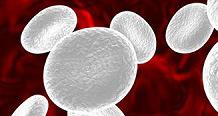
4 minute read
News
dr emma derbyshire phd rnutr (public health) nutritional insight ltd
dr emma derbyshire is a freelance nutritionist and former senior academic. her interests include pregnancy and public health. www.nutritionalinsight.co.uk hello@nutritionalinsight.co.uk
Advertisement
pre-pregNaNcy oBeSity aNd StillBirtH riSk
Rising body weights amongst women of childbearing age are a growing concern. Now, a new case-control study has looked at associations between body mass index before pregnancy and the risk of stillbirths.
Data was analysed from 1829 singleton pregnancies from women living in Pittsburgh, US. The rate of stillbirth among lean, overweight, obese and severely obese women was 7.7, 10.6, 13.9, and 17.3 per 1000 live-born and stillborn infants, respectively, indicating that risk increased proportionally with body weight. Scientists further identified that placental diseases, hypertension, fetal anomalies and umbilical cord abnormalities were closely related to stillbirth amongst women with obesity and severe obesity.
In summary, while there are multiple mechanisms underpinning a still birth, overweight and obese women should be aware that they may be at risk of health and medical complications that increase the risk of stillbirths.
For more information, see: Bodnar LM et al (2015). American Journal of Clinical Nutrition. Vol 102 no 4 pg 858-64.
dairy to reduce Body fat leVelS?
A growing body of studies has looked at links between calcium and dairy consumption in relation to body weight and composition. Now, a new meta-analysis has collected the evidence in this area.
Data from 41 studies (20 using calcium supplements) was analysed. Calcium intakes were around 900mg per day higher in the supplement groups. In the dairy group, calcium intake was around 1300mg per day.
Overall, neither calcium supplementation nor dairy consumption led to reductions in body weight or fat. Further sub-analysis, however, showed that in the presence of energy restriction, dairy consumption led to significant reductions in body fat, but did not affect body weight. These are interesting findings indicating that dairy consumption (ideally around three servings daily) could lead to short-term reductions in fat loss when eaten as part of a weight management diet.
For more information, see: Booth AO et al (2015). British Journal of Nutrition. Vol 114 Issue 07 pg 1013-25.
paSt dietS take a toll oN telomereS.
Leukocyte (white blood cell) telomere length is a useful indicator of biological ageing, with shorter telomeres signifying faster ageing. Now, new work has looked at how certain dietary patterns could affect this.
Dietary data using a semi-quantitative food frequency questionnaire was collected from a Korean sample of 1958 adults. Leukocytes telomere length was measured 10 years later on. Prudent (healthier) diets, i.e. those rich in legumes, nuts, fruits and dairy produce, were positively associated with longer telomere length in this cohort study. These are interesting findings, indicating that our past diets may catch up with us, possibly contributing to advanced biological ageing in our middle or older years.
For more information, see: Lee JY et al (2015). European Journal of Clinical Nutrition. Vol 69 pg 1048-52.
lateSt oN metaBolic SyNdrome
Metabolic syndrome (MetS) is a cluster of risk factors preceding the development of Type 2 diabetes, heart disease and stroke. Screening for MetS is, therefore, an important indicator of future health. As the potential health benefits of the Palaeolithic diet (a diet resembling our ancient ancestors) has attracted much attention recently, one new meta-analysis has looked at this in relation to components of MetS.
The new study published in the American Journal of Clinical Nutrition pooled data from four randomised controlled trials (RCTs) with a sample size of 159.
Scientists concluded that Paleolithic diets led to short-term improvements in waist circumference, triglyceride levels, systolic and diastolic blood pressure, fasting blood sugar and HDL cholesterol, when compared with control diets.
These findings imply that Paleolithic diets could go some way towards improving components of MetS. Further health benefits of Paleolithic nutrition are now worthy of investigation, along with additional RCTs that can feed into updated meta-analysis papers. Otherworkhaslookedintowhetherdifferent protein sources, i.e. animal versus plant, could affect adults with MetS. Overweight adults (n=62) with MetS ate a healthy diet for two weeks at baseline and were then randomised to eat: 1) plant protein (18%; 2/3s plant sources), 2) animal protein (18%; 2/3s animal sources) or 3) animal protein (27%; 2/3s animal sources).
All groups experienced similar weight loss benefits and reductions in MetS characteristics. These findings imply that either plant or animal protein could improve MetS profiles, although findings in this study were alongside heart-healthy, weight loss diets.
For more information, see: Manheimer EW et al (2015). American Journal of Clinical Nutrition. Vol 102 no 4 pg 922-3 and Hill AM et al (2015). American Journal of Clinical Nutrition. Vol 102 no 4 pg 757-70.

advertisement
WiltSHire farm foodS lauNcH NeW raNge of HealtHy eatiNg mealS
Our new caloriecontrolled range means your patients can enjoy their favourite dishes and watch their weight the easy way.
‘Nutritious & Delicious’ meals: • Maximum 400 calories • Low fat and salt • High protein options • At least one of five a day
Order brochures or arrange a free tasting of our NEW range: wiltshirefarmfoods.com
To book your Company’s product news for the Dec/Jan issue of NHD Magazine please call 0845 450 2125 (local rate)
NH-eNews plus
NHD eArticle with CPD
The UK’s only weekly enewsletter
for dietitians Issue 103 April 2015NHDmag.com www .dieteticJOBS .co .uk Since 2009 NHDmag.com Issue 105 June 2015
and
nutritionists. NUTRITIONAL BENEFITS OF YOGHURT Helen Kingett Bariatric Dietitian INTENSIVE WEIGHT CONTROL PROGRAMME . . . p20 WEB WATCH NEW RESEARCH Carrie Ruxton and Frankie Phillips p25 ELDERLY CARE HOME NUTRITION PEG FEEDING: CASE STUDY FALTERING GROWTH CANCER CARE NUTRITION ENTERAL FEEDING FOLLOWING STROKE Dimple ThakrarPrescribing Support Dietitian Bolton CCG DO DIETITIANS NEED TO BE SIP FEED PRESCRIBERS? . . . p18 WEB WATCH NEW RESEARCH Marion Ireland and Shubha Moses p9 MILK ALTERNATIVESMALNUTRITIONCHILDHOOD OBESITYFOLLOW-ON FORMULAS









